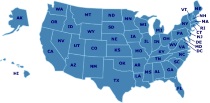How To Homeschool
What's Popular
CM Families of the South
K12 Alabama
How to Homeschool: Determine Your Child’s Learning Style
In Their Own Way: Discovering and Encouraging Your Child's Multiple Intelligences
CM Curricula
Who’s Afraid of the Big, Bad Book?
So You’ve Decided to Homeschool
East-Central AL Charlotte Mason Study Group
Homeschooling Essentials: A Practical Guide to Getting Started
Sonlight Catholic
One-Hour-A-Day Homeschooling
Educational Testing Services (ETS)
ALEX - Alabama Learning Exchange
Alabama Unschoolers
Wiregrass Area Unschoolers
Resources
Teach Your Own: The John Holt Book Of Homeschooling
LeapPad Game - Mind Wars Jr. Interactive Game
Homeschooling: The Early Years: Your Complete Guide to Successfully Homeschooling the 3- to 8- Year-Old Child
Free to Learn: Introducing Steiner Waldorf Earkt Childhood Education
Topics include:
· How kindergarten enables healthy child development
· What is movement based learning
· Why creative play is so crucial
· How children learn through imitation and rhythm
· When children are ready for school
· How to get support for parenting and daycare
Free to Learn is a unique guide to the principles and methods of Waldorf early education, drawing on kindergarten experience from around the world, with stories, helpful insights, lively observations, and pictures.
A Reason For® Spelling
Greenleaf Press
A Reason For® Handwriting
Phonics Pathways
Shurley English
For the Learners' Sake: Brain-Based Instruction for the 21st Century
Waldorf Education: A Family Guide
What draws parents and educators toward Waldorf Education today? "Waldorf Education - A Family Guide" offers a "first look" for parents and educators into the history, philosophy, curriculum, and traditions of this unique education. This comprehensive book is a collection of articles describing the world of Waldorf Education - the fastest growing independent school movement in the world.
Secret of Childhood
Reading Made Easy
Montessori Reading
H. A. Guerber's Histories
Veritas Press
Flip Over Math Manipulatives
Create! Press
Visual Brainstorms
Montessori: A Modern Approach
Paula Polk Lillard writes both as a trained educators and as a concerned parent -- she has many years as a public school teacher, but it was her enthusiasm for the education her own child experienced in a Montessori school that led her to become a leading voice in the Montessori movement in this country.
Her book offers the clearest and most concise statement of the Montessori method of child development and education available today.
Catholic Home Schooling: A Handbook for Parents
Pecci Reading Method: At Last! A Reading Method for Every Child
Montessori Life
Designed to provoke thought, professional growth and provide a forum for discussion of major issues & ideas in education.
Children at Play : Using Waldorf Principles to Foster Childhood Development
Idea Book For Cuisenaire Rods At The Primary Level
Learn and Do Unit Studies
The Absorbent Mind
A new foreword by John Chattin-McNichols, Ph.D., President of the American Montessori Society, places this classic book in a contemporary context, offering an intelligent discussion of current thinking in child education.
MCP PLAID Phonics
English from the Roots Up
The Mystery of History
Featured Resources
As an Amazon Associate, we earn from qualifying purchases. We get commissions for purchases made through links on this site.




















